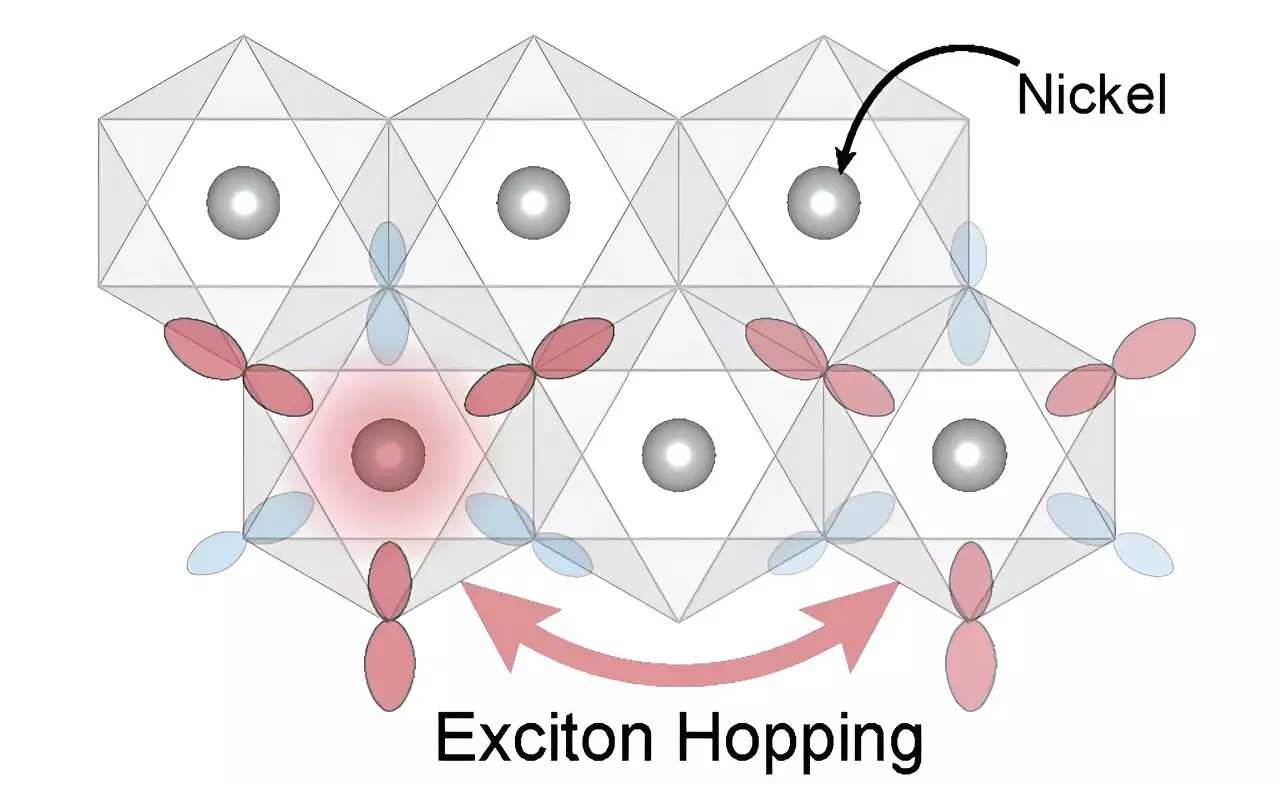Recent breakthroughs from MIT physicists have brought to light the captivating world of exotic particles, specifically excitons, which play a pivotal role in the magnetism emerging from ultrathin materials consisting of just a few atomic layers. This development is not arbitrary; it carries with it profound implications for future electronic applications and materials science. The research not only explores the fundamental properties of these excitons but also introduces an innovative methodology to study them using advanced techniques available at the National Synchrotron Light Source II in Brookhaven National Laboratory.
The exploration of nickel dihalides—materials made from nickel atoms interspersed with halogen elements such as chlorine, bromine, or iodine—reveals a sophisticated magnetic landscape that belies their simplistic structural appearance. This unlocks a broader understanding of how ultrathin materials can contribute to advanced tech applications, an area ripe for exploration given its potential impact on future technologies.
Excitons: The Educated Dance of Light and Matter
Excitons are quasiparticles created when an electron is excited out of its normal position by light, leaving behind a “hole.” This interaction, characterized by complex quantum mechanics, binds the electron and hole together, forming an exciton. Unlike traditional charged particles, excitons are neutral yet exhibit spin—a property that could be harnessed for innovative magnetic applications.
Understanding how these excitons form and behave in nickel dihalides enhances the potential for manipulating their properties through methods such as chemical adjustment or light exposure. This research exemplifies a remarkable journey into the microscopic mechanisms that govern their formation, with implications extending to quantum computing and novel sensor technologies. The MIT team’s monochromatic focus on excitons stands as a testament to the importance of attractive, yet not fully understood, materials in today’s scientific narrative.
Breaking Boundaries through Light Manipulation
One of the significant findings of this research is that excitons exhibit the capability to move throughout the bulk material rather than remaining tethered to their originating sites. This ability to “hop” between positions within the crystal lattice opens new avenues for controlling and studying these particles. The exploration identified specific energies or wavelengths of light necessary to produce excitons in different nickel halides. This high-precision approach offers an essential blueprint for utilizing light as an interactive medium for influencing the magnetic states of these materials—a notion that could redefine the interface between photonics and magnetism.
In the study, Riccardo Comin, associate professor at MIT, underscores the importance of resonant inelastic X-ray scattering (RIXS) as a cutting-edge technique that significantly contributed to this research. RIXS enhanced the researchers’ ability to track the movement of excitons in real-time, offering a more nuanced understanding of their dynamics and interactions with magnetic properties. This technological advancement could serve as a catalyst for accelerating research into similar nickel-based materials, further driving the field of magnetism in ultrathin structures.
The Quest for Novel Materials and Applications
The implications of understanding excitons extend far beyond theoretical knowledge; they encompass tangible applications in instilling new functional properties in materials. With excitons acting as conduits for information transfer, the potential for creating more efficient electronic devices is tantalizing. The results yielded by the MIT team not only provide a foundation for identifying new materials with exotic properties but also empower researchers to manipulate existing materials through chemical tuning.
This interplay of chemistry and physics may lead to innovative approaches for studying emergent phenomena across various materials, particularly those composed of nickel-based elements. The promise of this research lies considerably in its broad applicability, offering a springboard for realizing new functionalities in materials that could power the next generation of electronic components and quantum information technologies.
Collaborative Innovation at the Forefront of Science
The collaborative effort that has driven this research underscores the importance of interdisciplinary work in physics. A diverse team of scientists from various institutions has enriched this inquiry, sharing perspectives that ultimately broaden the scope of experimental physics. Reputable institutions like the Sorbonne and Arizona State University have collaborated with MIT researchers, creating a holistic approach to problems that require shared expertise and advanced technology.
As the landscape of materials science evolves, understanding how novel interactions—such as those presented by excitons in nickel dihalides—inform our broader understanding of physics will remain pivotal. The ongoing pursuit of knowledge in this critical field promises to shape not only academic discourse but also practical applications that will define future technologies.

